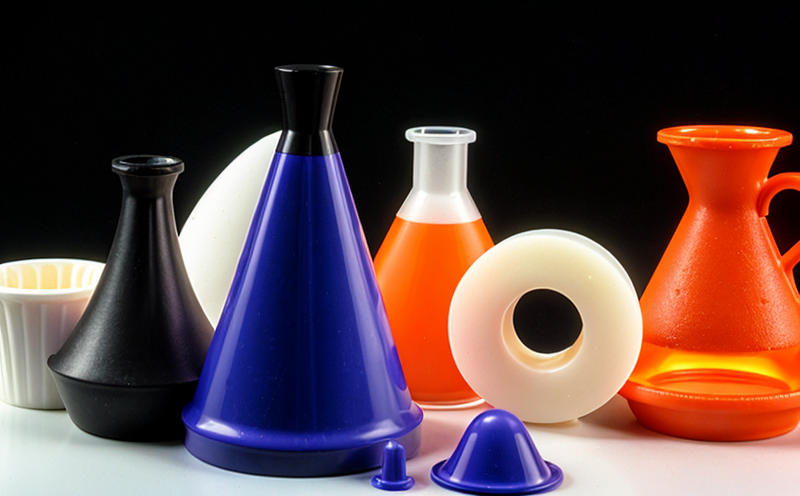Pharmaceutical Tablet Blister Polymer Testing
The integrity and quality of pharmaceutical products are paramount in ensuring patient safety. Among the various components that contribute to a tablet's performance, polymer materials used in blisters play a crucial role by providing protection against environmental factors such as humidity and light. Therefore, thorough Pharmaceutical Tablet Blister Polymer Testing is essential for assessing the suitability of these polymers.
Polymer-based blister packaging is designed to protect tablets from moisture and oxygen, which are critical in preserving their shelf life and efficacy. The integrity of this barrier can be compromised by factors such as humidity, mechanical stress during manufacturing, or even chemical reactions with other materials within the package. Therefore, it's important to conduct rigorous testing to ensure that the polymer used is robust enough to withstand these conditions.
The process typically begins with specimen preparation, which involves cutting samples of the blister packaging to standard sizes for testing. The next step is the application of a standardized test method designed to evaluate the barrier properties of the polymer, such as water vapor transmission rate (WVTR), oxygen permeability (OP), and heat-seal strength.
The choice of instrumentation is crucial in obtaining accurate results. Instruments like Permeameters are used for measuring WVTR and OP, while a Tensile Tester may be employed to determine the tensile properties of the polymer film. These tests help establish whether the polymer meets the required standards set by regulatory bodies such as the FDA or international standards like ISO 15106.
The testing process is not only about evaluating physical properties but also ensuring that the polymer does not degrade over time. This requires long-term stability studies, where samples are stored under various conditions to assess their performance over extended periods. Compliance with these tests ensures that the final product meets all regulatory requirements and provides reliable protection for the tablets.
In summary, Pharmaceutical Tablet Blister Polymer Testing is a critical process that ensures the integrity of polymer-based packaging in pharmaceutical applications. By adhering to rigorous testing protocols, manufacturers can ensure consistent quality and patient safety.
Why It Matters
The importance of Pharmaceutical Tablet Blister Polymer Testing cannot be overstated. Ensuring that the polymer used in blister packaging is suitable for its intended purpose is vital for several reasons:
- Patient Safety: Properly sealed blisters protect tablets from moisture, light, and oxygen, which can degrade active ingredients.
- Product Integrity: The integrity of the polymer barrier directly affects the product's shelf life and efficacy.
- Regulatory Compliance: Adherence to regulatory standards ensures that products meet quality and safety requirements.
- Economic Benefits: Poor packaging can lead to increased waste, recalls, and customer dissatisfaction.
In essence, the polymer used in blister packaging is a critical component of pharmaceutical manufacturing. Any compromise on its integrity or performance could have severe consequences for both manufacturers and consumers.
Applied Standards
| Standard | Description |
|---|---|
| ISO 15106:2017 | Determination of the water vapor permeability of packaging materials used in pharmaceutical products. |
| ASTM D3985-14 | Oxygen permeability measurement for plastic films and sheets using a controlled atmosphere gas permeameter. |
| EN 20769:2014 | Test methods for blister packaging materials used in pharmaceutical products. |
The standards listed above provide the framework for conducting Pharmaceutical Tablet Blister Polymer Testing. Compliance with these ensures that the testing process is both consistent and reliable, leading to accurate results and increased confidence in product quality.
Why Choose This Test
- Comprehensive Evaluation: The test evaluates multiple critical properties of the polymer, including WVTR, OP, and heat-seal strength.
- Regulatory Approval: Compliance with these tests is mandatory for pharmaceutical products, ensuring regulatory approval.
- Patient Safety: Ensures that tablets remain protected from environmental factors throughout their shelf life.
- Cost-Effective: Early detection of issues in the packaging process can prevent costly recalls and rejections.
- Quality Assurance: Provides consistent quality across different batches of products.
Choosing this test ensures that pharmaceutical manufacturers meet the highest standards of quality and safety, thereby protecting both their reputation and the well-being of patients.





